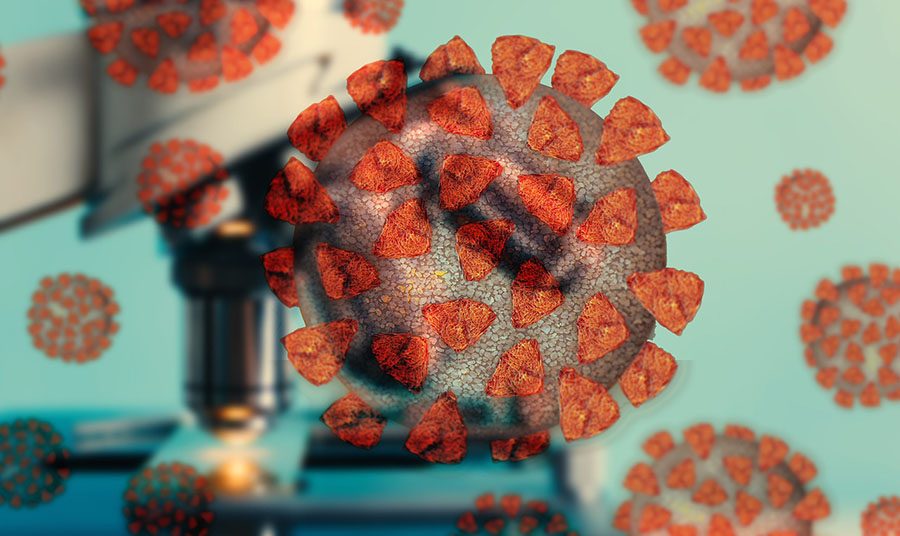The Life Sciences Report: The Genetics Policy Institute serves as an advocacy group for stem cell research. How has stem cell research evolved over the past 10 years?
Bernie Siegel: I've been involved in this field for about 14 years. When I started, I worked with some leading scientists who were looking for a legal mouthpiece in debates about embryonic stem cell research and human cloning issues. Since then, the societal debate has moved well beyond discussions about cloning.
"Regenerative medicine is a game changer for patients."
After attending the first International Society for Stem Cell Research (ISSCR) meeting in 2003, I created the Genetics Policy Institute as a nonprofit advocacy organization charged with facilitating collaboration between scientists, industry, patients and the media. The idea is to bring the field together and accelerate stem cell research for cures. Regenerative medicine is a game changer for patients.
TLSR: A lot of time and resources have been spent on stem cell research, but there's very little out there in terms of a definite, on-the-market treatment. How can we, as a society, accelerate cures?
BS: Scientists seem to have a bit of a problem providing to the public the critical importance of their field. In the course of this field's development, as science turned into medicine and we've started to see the industrialization of cell therapies and other advanced therapies, the arc of advocacy has changed from a battle over contentious societal issues, which was research on human embryos, to issues we could only dream about a decade ago.
Today, there are clinical trials with legitimate questions that must be addressed. How are patients being recruited for clinical trials? Should they or could they be paid? It's not an issue of the type of stem cell studied, because all stem cell types—mesenchymal, hematopoietic, reprogrammed, embryonic, etc.—have value as potential tools in the toolkit. The issues are societal and regulatory, and must be addressed within the patient community in partnership with industry and regulatory agencies.
TLSR: Where do you see the funding coming from to support all of these efforts?
BS: Government resources are key to funding basic stem cell research. The National Institutes of Health (NIH) has been critically important in moving this field forward. The California Institute for Regenerative Medicine (CIRM), which has invested $3 billion ($3B), has been a huge resource and is absolutely critical for the U.S. maintaining a leading role.
Outside the U.S., we find other governments treating regenerative medicine as a priority. Japan sees it as a priority and has created an accelerated regulatory model for induced pluripotent stem cells (iPSCs), attracting companies from around the world to Japan for regulatory approval of their clinical trials. Canada is another major player, with both investments and the establishment of the Centre for Commercialization of Regenerative Medicine.
"If we could solve the organ shortage by growing tissues, and then making those tissues into organs, it would be a major achievement in alleviation of human suffering."
Within the academic community, millions of dollars of philanthropic contributions support efforts at the university and research institute level. For example, the Sanford Consortium for Regenerative Medicine supports research at the University of California San Diego, the Salk Institute for Biological Studies, the Sanford Burnham Prebys Medical Discovery Institute, the Scripps Research Institute and the La Jolla Institute for Allergy and Immunology. In addition, the Harvard Stem Cell Institute has been a game changer in uniting institutions within the Harvard community for collaboration in stem cell research.
Beyond government and academic programs, there is an unmet need for private capital. One of the aspects of our annual World Stem Cell Summit is the RegMed Capital Conference, which was created to attract new money to the field. Participants in our second meeting, scheduled for Dec. 10–12 in Atlanta, Georgia, include the Keiretsu Forum, which is the largest network of accredited investors in the world. The forum's role at the conference will be to educate startup companies on the critical steps to establishing a credible business. Also attending will be a good assortment of representatives from leading investment banks participating in the regenerative medicine space. Relevant topics, such as reimbursements, regulatory issues and intellectual property, will be presented to the business community, entrepreneurs and public companies, as well as discussion of best practices and what investors need to hear to write the check.
TLSR: What do you view as some of the key developmental successes in stem cell research so far?
BS: The area of reprogrammed cells has been a major development in the field, with Dr. Shinya Yamanaka from Kyoto University winning the Nobel Prize for his discovery. Furthermore, the ability to return ordinary somatic cells to an embryonic state brings the promise of using these cells as tools for drug discovery. This work may streamline the way drugs are brought to market and may result in shorter development timelines and lower development costs.
Another major advance is CRISPR (clustered regularly interspaced short palindromic repeats) technology and gene editing, which may actually provide blueprints allowing the growth of new organs and tissues.
Of course, it takes time to get these discoveries into the human population. That's one of the reasons it's still tremendously important that the advocacy world stay dialed in. We need safe and effective treatments, but for this to happen, we have to find a smarter way of moving the field forward.
TLSR: Can you tell me about some of the companies making contributions to stem cell research?
BS: I am really impressed with Fujifilm Holdings Corp. (4901:TYO). Fujifilm understands that technology is changing everything. It is from this understanding that the company was able to pull ahead of Eastman Kodak Co. (KODK:NYSE), which was slow to embrace the digital age.
"Beyond government and academic funding programs, there is an unmet need for private capital."
Now, we find Fujifilm has prioritized medicine and recently acquired a very important U.S. company, Cellular Dynamics International Inc. Cellular Dynamics' technology is based around Dr. James Thomson's discoveries at the University of Wisconsin, focused on reprogrammed stem cells. When you look at the financial strength of Fujifilm, it has a multibillion-dollar market cap, one of the strongest in the space, and it's a significant investment that I think will continue to reverberate around the field.
TLSR: Fujifilm, as you pointed out, started as a Kodak competitor. When you think of Fujifilm, you're not really thinking of biotech, drug discovery or stem cells. Can you elaborate on that evolution?
BS: Fujifilm has evolved from its core expertise in chemicals. Not only was it the best in developing film, it excelled in all sorts of photographic and imaging technologies. As it realized people were not buying film anymore, Fujifilm studied how it could leverage its excellence in research and development, and apply it to new fields. Its expertise in the chemicals space evolved into cellular biology, allowing the company to work with stem cells. If you have the resources to combine and expand existing technologies into new areas, you then realize successful corporate evolution. Fujifilm has done that very well.
TLSR: Fujifilm is working with iPSCs with the goal of growing entire human organs. How do you see these efforts progressing?
BS: This is a very important topic. One of the joys of putting together the program of the World Stem Cell Summit is being able address the hot topics of the day, one of which is the field of "tissues to organs."
We are in the middle of a convergence, where breakthroughs in biomaterials, vascularization, tissue engineering, regenerative engineering and stem cell technologies are joining. For the first time, we are looking at ways to create a blueprint for something that always seemed like an impossible dream. If we could solve the organ shortage by growing tissues, and then making those tissues into organs, it would be a major achievement in alleviation of human suffering.
TLSR: What other companies do you see as leaders in stem cell research?
BS: From my patient advocacy point of view, I've always been impressed with StemCells Inc. (STEM:NASDAQ). StemCells Inc. is in various areas of rare diseases and neurological disorders, such as Alzheimer's. This is a pioneering company dealing with the challenges of cell therapies.
"Government resources are key to funding basic stem cell research."
As an advocate for stem cell research, I am really impressed by its interaction with the patient community. Companies trying to move forward with cell therapies, gene therapies and other advanced therapies must find patients to enroll in clinical trials, and smart companies are very supportive of the patient advocacy movement. Patient advocacy comes from groups including the Juvenile Diabetes Research Foundation (JDRF), the Parkinson's Action Network, the Huntington's groups in California, the spinal cord injury community, and groups like Global Healthy Living Foundation, which runs the "CreakyJoints" Facebook site. Companies like StemCells Inc. are working with patient groups to understand needs and, in turn, hopefully provide potential treatments and cures. They have earned my respect.
TLSR: What about using stem cells to create artificial organs?
BS: ViaCyte Inc. (private) is developing implantable pancreatic beta cell devices to treat insulin-dependent diabetes. From an advocate perspective, I'm impressed that JDRF has so heavily invested in this company. To me, the greatest technological validation is when a medical philanthropy invests in a private company. ViaCyte is using embryonic stem cells to replace insulin-secreting beta cells in patients suffering from diabetes. The company's VC-01 device is currently in clinical trials.
Another company, Orgenesis Inc. (ORGS:OTCQB) is developing a way of differentiating a patient's cells into islet cells to be used for insulin secretion.
The implications of the research from both of these companies are very profound. The ability to differentiate one cell into another type of cell for a patient is an important discovery.
TLSR: In December, you'll be putting on the World Stem Cell Summit & RegMed Capital Conference. Can you describe the events and what attendees can expect to take away?
BS: The summit is a cross-disciplinary meeting, with seven concurrent tracks including discovery; clinical translation; an innovation showcase on cell manufacturing, biobanking and regenerative engineering; regenerative services and applications. There are also panels on the military, and services available in the "here and now" for wounded warriors. Concurrently, we have the RegMed Capital Conference and the ELSI (Ethical, Legal and Society Issues) track. The summit brings together key influencers and leaders from around the world.
"We need safe and effective treatments, but for this to happen, we have to find a smarter way of moving the field forward."
Unique to our conference is our nonprofit organization—the combined Genetics Policy Institute and Regenerative Medicine Foundation. We partner with leading academic institutions to put the summit together, bringing diversity to the community through its core organizing partners. This year our partners include Mayo Clinic, Kyoto University iCeMS, Wake Forest Institute for Medicine, BioBridge Global, the New York Stem Cell Foundation and the Georgia Center for Regenerative Engineering & Medicine (Georgia Tech, Emory and University of Georgia).
Additionally, the summit will feature a trade show, one-to-one partnering, a poster session and networking. Finally, we will present the 11th Stem Cell Action Awards, honoring some of the major dignitaries advancing the field through advocacy, public policy and philanthropy.
The World Stem Cell Summit focuses on world-class science and also provides panels that are understandable to the public, the media and the investor. By understanding that patients and consumers are the underpinning and support for this field, we can create public appreciation for the emerging science. To paraphrase Lincoln, with public appreciation, you can do anything; without it, nothing can be accomplished.
TLSR: Thank you for your time today.
Bernard Siegel is the founder and executive director of Genetics Policy Institute (GPI). He is also the founder and co-chair of a series of global conferences, including the annual World Stem Cell Summit, and founder and editor-in-chief of the peer-reviewed World Stem Cell Report. Siegel first became involved with the scientific community when, in 2002, he filed a landmark case seeking a guardian for the alleged clone, "Baby Eve." This case, and the media attention which ensued, allowed Siegel to meet with scientists and policy experts to discuss the need for legal and policy advocates for the scientific community. This led to Siegel's founding of the Genetics Policy Institute and his commitment to advocacy work on behalf of patients, doctors and researchers involved with the regenerative medicine community. Siegel is a native of Richmond, Virginia. He received his undergraduate and law degrees from the University of Miami and has been a member of the Florida Bar since 1975.
Want to read more Life Sciences Report interviews like this? Sign up for our free e-newsletter, and you'll learn when new articles have been published. To see recent interviews with industry analysts and commentators, visit our Streetwise Interviews page.
DISCLOSURE:
1) Daniel E. Levy conducted this interview for Streetwise Reports LLC, publisher of The Gold Report, The Energy Report and The Life Sciences Report, and provides services to Streetwise Reports as an independent contractor. He or his family owns shares of the company mentioned in this interview: None.
2) The following companies mentioned in the interview are sponsors of Streetwise Reports: StemCells Inc. The companies mentioned in this interview were not involved in any aspect of the interview preparation or post-interview editing so the expert could speak independently about the sector. Streetwise Reports does not accept stock in exchange for its services. The Life Sciences Report is a media partner for the upcoming World Stem Cell Summit.
3) Bernard Siegel: I own, or my family owns, shares of the following companies mentioned in this interview: None. I personally am, or my family is, paid by the following companies mentioned in this interview: None. My company has a financial relationship with the following companies mentioned in this interview: None. I was not paid by Streetwise Reports for participating in this interview. Comments and opinions expressed are my own comments and opinions. I determined and had final say over which companies would be included in the interview based on my research, understanding of the sector and interview theme. I had the opportunity to review the interview for accuracy as of the date of the interview and am responsible for the content of the interview.
4) Interviews are edited for clarity. Streetwise Reports does not make editorial comments or change experts' statements without their consent.
5) The interview does not constitute investment advice. Each reader is encouraged to consult with his or her individual financial professional and any action a reader takes as a result of information presented here is his or her own responsibility. By opening this page, each reader accepts and agrees to Streetwise Reports' terms of use and full legal disclaimer.
6) From time to time, Streetwise Reports LLC and its directors, officers, employees or members of their families, as well as persons interviewed for articles and interviews on the site, may have a long or short position in securities mentioned. Directors, officers, employees or members of their families are prohibited from making purchases and/or sales of those securities in the open market or otherwise during the up-to-four-week interval from the time of the interview until after it publishes.




























































